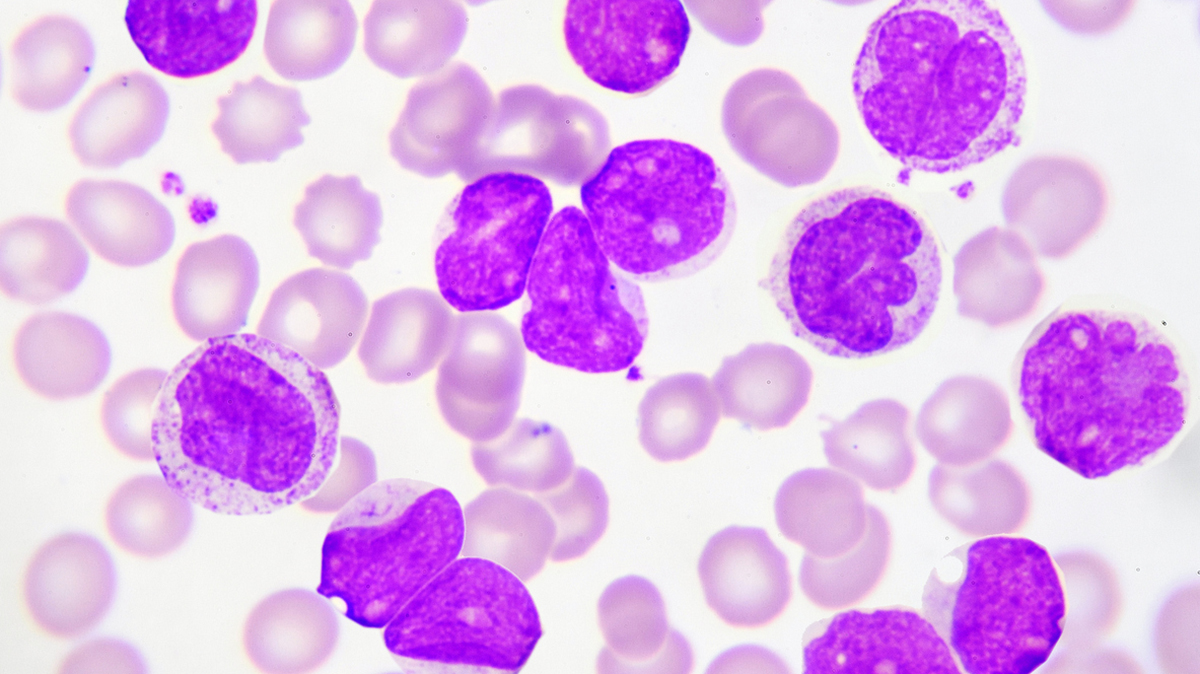AbbVie, Roche eye first-line use of Venclexta in leukaemia

AbbVie and Roche’s Venclexta has hit the mark in a combination trial that could help it move into the treatment-naive chronic lymphocytic leukaemia (CLL) arena.
Top-line results from the CLL14 study showed that giving Venclexta (venetoclax) alongside Roche’s Gazyva (obinutuzumab) improved progression-free survival compared to Gazyva plus chemotherapy when used first-line in CLL.
The data will be presented in full at a future medical conference but, according to the two partners, it could help move the BCL-2 inhibitor up the treatment pathway in CLL, adding another chemotherapy-free option in an increasingly complex array of therapies for newly-diagnosed CLL patients.
At the moment, oncologists selecting front-line therapy for CLL patients have to decide whether to treat them with AbbVie/Johnson & Jonson’s BTK inhibitor Imbruvica (ibrutinib), which is given indefinitely, or a fixed-duration regimen of chemotherapy plus Roche’s immunology drug Rituxan (rituximab), depending on factors such as the patient’s age and the severity of the cancer.
If approved, the Venclexta/Gazyva combination would offer a regimen that avoids the use of chemotherapy and unlike Imbruvica doesn’t have to be given on a continuous basis.
[caption id="attachment_30156" align="alignleft" width="93"] Roche's Sandra Horning[/caption]
Roche's Sandra Horning[/caption]
“People with CLL continue to need more treatment options because some patients are unable to tolerate chemotherapy regimens due to their underlying health,” said Sandra Horning, Roche’s chief medical officer.
“CLL14 is the first study to show superior progression-free survival for Venclexta plus Gazyva compared to a standard-of-care regimen. We will work with health authorities to bring this potential chemotherapy-free treatment option to people who need it as quickly as possible,” added Horning.
In June, Venclexta picked up a broader US approval as a monotherapy and alongside Rituxan in relapsed CLL based on the results of the MURANO trial, with the combination becoming the first oral, chemotherapy-free combination with a fixed duration in the second-line setting.
That data has already sparked an uptick in sales of Venclexta, which have been a little sluggish since its launch in 2016, but expansion into first-line CLL could be transformative and make it the fastest-growing drug among all small-molecule drugs for the disease, according to GlobalData. It will also keep AbbVie and Roche’s CLL franchise buoyant after Imbruvica loses patent protection in 2026, says the market research firm.
In addition to the Venclexta/Gazyva combination, AbbVie and Roche are also running trials of Venclexta with Imbruvica (CAPTIVATE) and Imbruvica plus Gazyva (iLLUMINATE) which could provide yet more first-line options.
Meanwhile, next year could also see the expansion of Venclexta into acute myeloid leukaemia (AML), a particularly aggressive blood cancer with a very low survival rate, after it was filed for approval in the summer.
The drug is also being tested in multiple myeloma (MM), non-Hodgkin lymphoma (NHL) and myelodysplastic syndrome (MDS), and EvaluatePharma has predicted that sales could accelerate to reach $1.8 billion by 2022.












